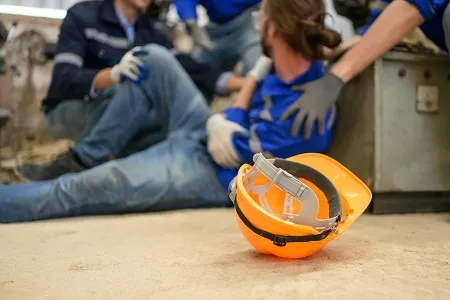Enhancing Onboarding: 10 Key Activities for a Robust Induction Process
It’s an overarching process that involves not only educating them about the company and its people, but also making them feel part of it, with a welcome that is both practical and personal.
It’s also a commitment that must extend beyond an hour on their first day.
A brief show-around before tossing them in at the deep end will only create a new staffer who is wondering what they have gotten themselves into – and perhaps already what they need to do to get out.
Onboarding transcends basic introductions, aiming to integrate new hires both practically and personally into the company culture. It’s not a one-hour, first-day affair but an ongoing commitment to ensure new staff feel valued and equipped for their roles.
1. Welcoming Introduction
The onboarding journey commences with a welcoming structured introduction, pivotal in shaping a new employee’s perception of the company. It’s crucial that the reception staff is well-informed about the arrival of the new hire. This preparation includes having detailed information about the employee, such as their name, role, and the person they are meeting first. A well-prepared reception creates a welcoming atmosphere, making the new hire feel expected and valued from the moment they step in.
The impact of a good first impression cannot be overstated. It sets the tone for the employee’s entire experience with the company. A positive initial experience fosters a sense of belonging and confidence. This is especially important in larger organizations, where new hires might feel overwhelmed. When reception staff greet them by name and demonstrate familiarity with their role and schedule, it conveys a message that the organization is cohesive, well-organized, and attentive to individual employees.
This section could further elaborate on strategies to enhance this first impression. For example, personalized welcome messages, a welcome pack with essential information and goodies, or even a welcome board with the new hire’s name can make a significant difference. Additionally, ensuring that the first point of contact is not just functional but also friendly and engaging can alleviate any anxiety and set a positive tone for the day ahead.
The importance of a structured introduction extends beyond mere pleasantries. It’s an opportunity to instill company values and culture right from the start. For instance, if safety and compliance are company cornerstones, reception staff can briefly introduce these aspects, indicating the company’s commitment to these values.
The structured introduction is more than a formality; it’s a strategic component of the onboarding process. By focusing on creating a welcoming and informative first interaction, companies can significantly enhance the new hire’s initial experience, leading to greater job satisfaction and engagement.
2. In-Depth Guided Tour: Beyond the Basics
An effective onboarding process includes a comprehensive guided tour of the workplace. This tour serves as much more than a mere introduction to the physical space; it is a critical component in familiarizing new employees with the company’s operational dynamics, safety protocols, and emergency procedures.
A well-planned tour goes beyond just pointing out locations. It involves a detailed walkthrough, where the new hire is introduced to various departments and team members. It’s important to highlight key areas such as emergency exits, first-aid stations, and specific zones of importance related to the employee’s role. This approach not only ensures that the employee is aware of safety measures but also helps in building a mental map of the workspace.
Incorporating anecdotes or case studies during the tour can make the experience more engaging. For example, sharing a story about how a particular safety protocol was developed in response to a past incident can underline the importance of safety in the workplace. Similarly, introducing them to different teams and explaining their functions can help the new employee understand how their role fits into the larger picture of the organization.
Effective tours often include interactive elements, such as quick meet-and-greets with key personnel or hands-on demonstrations of safety equipment. This interactivity ensures that the tour is not just informative but also memorable.
An in-depth guided tour is an opportunity to embed the company’s values, especially regarding safety and teamwork, from the first day. By carefully planning and executing these tours, organisations can significantly improve the onboarding experience, leading to better informed and more engaged employees.
3. Detailed Company Orientation
A comprehensive company orientation is a cornerstone of effective onboarding. This should include a detailed overview of the company’s history, highlighting key milestones and achievements. Understanding the company’s journey can instill a sense of pride and belonging in new employees.
The core of the orientation should focus on the company’s culture and values, aligning new hires with the organisational ethos. Emphasize how these values translate into everyday operations and decision-making.
Particularly crucial is the emphasis on health and safety practices, especially in the context of Australian workplace regulations. Discuss the company’s commitment to maintaining a safe work environment and the policies in place to ensure compliance with national standards. This could include regular safety drills, adherence to the Work Health and Safety Act and specific industry-related safety protocols.
Use this opportunity to also introduce any unique aspects of the company’s approach to workplace wellbeing and employee support. This not only covers physical safety but also mental health and overall wellbeing, which are increasingly recognised as critical components of workplace safety.
A detailed company orientation not only equips new employees with essential information but also integrates them into the company culture, ensuring they understand and commit to the company’s standards of safety and excellence.

4. Health and Safety Training Sessions
Effective onboarding in Australia must include health and safety training sessions tailored to the local context. These sessions should comprehensively cover Australian health and safety laws, such as the Work Health and Safety Act and relevant state-based regulations. It’s crucial to discuss workplace hazards specific to the industry and the geographical location of the business.
The training should also focus on safe working practices, ensuring employees are aware of the correct procedures to minimise risks. These sessions play a vital role in fostering a safety-first culture within the organisation. By prioritizing safety training, companies not only comply with legal requirements but also demonstrate their commitment to employee wellbeing. This approach can lead to a more engaged and safety-conscious workforce, reducing the likelihood of accidents and fostering a culture of proactive safety management.
5. Interactive Policy and Procedure Reviews
Effective onboarding should include interactive reviews of company policies and procedures, especially those pertaining to HR and safety. These reviews are critical for ensuring new employees understand their responsibilities and the company’s expectations.
To enhance engagement and comprehension, these sessions can incorporate interactive methods such as Q&A sessions, role-playing scenarios and group discussions. This approach encourages active participation, allowing employees to ask questions and clarify doubts in real-time. It also helps in identifying areas where further training or clarification might be needed.
By making policy reviews interactive, companies can foster a more inclusive and supportive environment, ensuring that all employees are well-informed and aligned with the company’s standards and expectations.
6. Team Integration Activities
Facilitating team integration activities is a key aspect of onboarding that helps new hires assimilate into their teams. Activities like small group lunches provide a relaxed environment for new employees to interact with their colleagues, fostering a sense of camaraderie and belonging. Team-building exercises, on the other hand, can be more structured yet fun, aimed at building trust, improving communication, and encouraging collaboration among team members.
It’s important to ensure these activities adhere to safety guidelines, especially considering the diverse backgrounds and abilities of team members. This might include choosing accessible locations, considering dietary restrictions, and planning exercises that are inclusive and safe for everyone. By thoughtfully organizing these activities, companies can promote a positive work culture and help new employees feel welcomed and valued from the start.
7. Mentorship and Shadowing Programs
Mentorship and shadowing programs are vital in the early stages of a new employee’s journey. When you assign a mentor or shadowing partner, you’re providing the new hire with a knowledgeable guide who can offer one-on-one support. This mentor, ideally an experienced employee, should be well-versed in the company’s operational procedures and workplace safety protocols.
Through this program, the new employee gets a hands-on learning experience, observing how tasks are performed, understanding the nuances of company culture, and seeing how safety practices are integrated into daily operations. This method of learning is often more impactful than traditional training methods, as it allows for real-time observation and immediate feedback.
Additionally, mentorship and shadowing help in fostering a culture of support and collaboration. New employees can feel more at ease, knowing they have a dedicated person to turn to with questions or concerns. This not only helps them in adapting to their new role more efficiently but also in building meaningful professional relationships within the organization.
By implementing these programs, companies can ensure that new hires are not only effectively trained in practical aspects of their jobs but also feel welcomed and valued as part of the team. This can lead to higher job satisfaction and lower turnover rates.
8. Regular Check-ins and Feedback Sessions
Scheduling regular check-ins and feedback sessions is crucial in supporting new employees’ transition into their roles. These sessions should be frequent enough, such as weekly or bi-weekly, to provide timely support and guidance. They serve as a platform for discussing the employee’s progress, understanding their experiences, and identifying areas for development. During these sessions, HR or their direct supervisor can offer feedback on performance, particularly in areas related to operational procedures and adherence to safety practices.
Moreover, these sessions offer a chance for new hires to voice their concerns or queries, fostering an open line of communication. Addressing these concerns promptly can significantly enhance job satisfaction and engagement. Also, feedback sessions are an ideal opportunity to reinforce safety protocols, ensuring the new employee understands and applies these practices consistently.
In addition, these check-ins can be used to set short-term goals and review progress towards them, which helps in tracking the employee’s growth and contributions to the team. Regular feedback not only aids in professional development but also helps in integrating the new hire into the company culture more seamlessly.
9. Ongoing Professional Development Opportunities
Providing ongoing professional development opportunities is crucial for the continuous growth and engagement of employees. In the context of Australia, focusing on advancements in workplace safety and HR practices is particularly important.
These opportunities could include workshops, seminars, and training sessions that keep employees updated on the latest trends, laws, and innovations in workplace safety and HR. For instance, training on new safety technologies, updates in Australian labor laws, or emerging HR management strategies can be extremely beneficial.
Additionally, online courses, webinars and certifications from recognised institutions can be offered to employees to broaden their skill sets. Encouraging participation in industry conferences and events can also provide valuable networking opportunities and expose employees to new ideas and best practices.
Investing in professional development not only enhances employees’ skills but also demonstrates the company’s commitment to their growth and wellbeing. This investment can lead to increased job satisfaction, motivation, and loyalty, which are critical for the long-term success of any organisation.

10. Personalised Onboarding Plan
Creating a personalized onboarding plan involves a deep understanding of the new hire’s role, background, and professional needs. This plan should be more than a generic introduction; it should be a comprehensive roadmap that guides the new employee through their initial days and weeks in the company.
For example, if a new hire is in a technical role, their onboarding plan could include detailed sessions on specific equipment or software they will use, coupled with safety training relevant to their tasks. For someone in a managerial position, the plan might focus on leadership training and meetings with key team members and stakeholders.
In addition to role-specific training, the plan should include opportunities for the new employee to immerse themselves in the company culture. This might involve informal meet-and-greets with different department heads, participation in company events, or even a buddy system where they are paired with a more experienced employee.
The key is to ensure that each plan is thoughtfully crafted, taking into account the individual’s career history, learning style, and the skills they need to succeed in their new role. By doing so, the onboarding process becomes a significant and positive experience that sets the tone for the employee’s future in the company.



